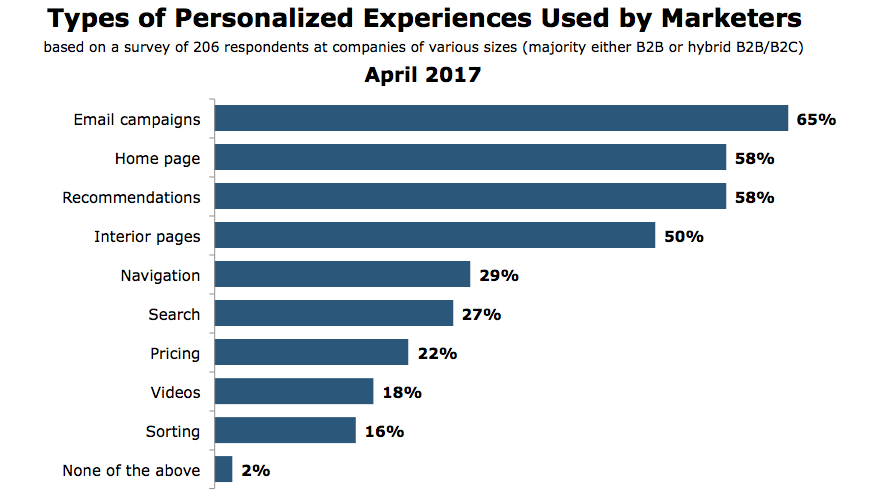If you’ve been in the marketing game long enough, you’ll notice that some SEO strategies remain on the list of best practices from year to year. In the old days, such strategies were limited to keywords and minor tweaks here and there. Now, SEO marketing covers a range of techniques and content types.
In fact, content marketing has been embraced by 90 percent of B2B marketers as the predominate strategy for lasting, organic SEO.
What is Content SEO?
Web designers, marketers, and content creators live and die by content SEO. It’s a manner of creating quality, relevant content that’s as pleasing to your audience as it is to Google. In fact, search engines increasingly favor user experience (UX) over almost all other metrics when indexing and ranking web pages.
There’s a saying in digital marketing that content is king. But, properly optimized, high-quality content rules over all. Just keep in mind that authenticity counts in content creation as much as in other aspects of conducting business, and write for the audience, not for Google.
To that end, here are five types of SEO content that will always serve you well.
Keywords vs Key Phrases
Previous SEO focused primarily on keyword choice and placement within the content. This led to inane practices like keyword stuffing and forcing words into content in a grammatically incorrect, unnatural way. The practice has evolved to one that indexes content based on long-tail keywords that add relevance and context to the evaluated material.
Long-tail keywords and key phrases allow Google to present tailored content in search results and makes it more likely that your properly optimized content is presented to it’s intended audience. Other than personally browsing every possible website, indexing SEO content by longer descriptive phrases offers the best odds of returning relevant results. That means repeat traffic and higher sales for you!
Visual Content
If an image is worth a thousand words, how much ROI do you think you’ll get from video? There’s no doubt that visual content adds value to web presentations of almost any kind. Photos and video provide additional context to words, show products or services in action, or allow viewers to feel a more intimate connection to your company.
The problem is, images and video content on their own don’t improve your position on the search engine results pages (SERPs). The spiders that Google and other search engines use can’t “see” images and video. They can relay that pages contains visual content, but they can’t tell searchers what that content is without crawlable, creator-added SEO context.
You can double-dip and maximize your SEO with visual content in two ways.
First, choose a keyword-rich phrase or long-tail keywords for the title and/or captions. Next, add an alt-tag to the image or video that web crawlers can see and evaluate for relevance.
Guest Posting
Link-building is another SEO practice that has evolved over the years. In the early days of SEO, unscrupulous marketers encouraged content creators and marketers to add spam links or guest posts to content that was either completely unrelated to their business or lacked industry credibility.
This led to readers being redirected to content that was of low quality or authoritative brands losing credibility through association with shady practitioners, however unintentional.
However, guest posting is still a tried and true SEO strategy when done right. Only add outbound links to authoritative blogs or websites with a high Q quotient. accept or query for guest posts – on your blog or theirs – that add value and relevance to your other content. This opens up both parties to a whole new audience and adds to your own brand authority.
Email and Newsletters
Despite rumors of its demise, email marketing remains one of the most reliable forms of lead generation, outreach, and follow up in digital marketing. Its benefit to SEO is almost as valuable as it’s place in marketing strategies. Newsletters and other email content keeps customers in the loop, and it;s a great way to offer deals or obtain feedback, among its many uses.

In turn, email marketing drives more traffic to your website, improves on-site engagement, and helps refine your customer outreach. It can even be turned into quality on-page content. SEO points of optimization include headers, subject lines, and embedded links.
Blogging
Even if your main product is not educational or informational, blogging is still a valuable SEO tool. It provides added value to service-oriented businesses by supplementing other content pages and increases your industry authority.
For example, a writer could improve their professional website with articles about the importance of good written communication skills or a roofer could add a blog post about roof maintenance. When this content is written using other SEO best practices, the results are a win, win, win for all.
Final Thoughts
Marketing fads and gimmicks will come and go. While some of them seem effective in the short term, few are sustainable over the long haul. When you’re looking for organic placement in the SERPs and consistent traffic growth, using tried and true SEO tactics carry more weight.
Unsure where to begin or how and when to tweak your SEO strategy? Talk to an expert who knows how to optimize your SEO in ways that get results.



































